India Gate
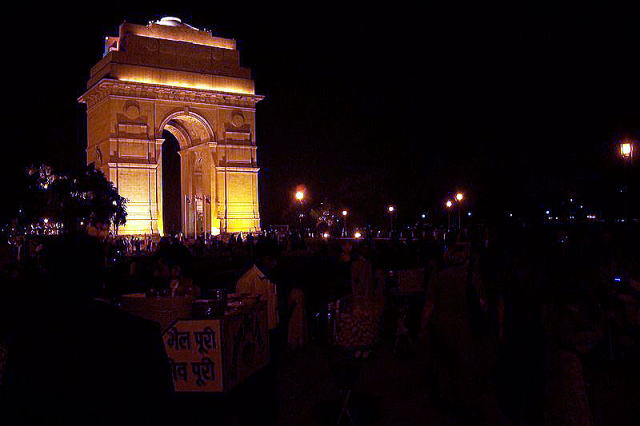
Crowds enjoy a pleasant night on the grounds around India Gate, February
2006.
The India Gate is the national monument of India. It is one of the largest
war memorials in India. Originally
known as All India War Memorials, it is a prominent landmark in Delhi and
commemorates the 90,000 soldiers
of the erstwhile British Indian Army, who lost their lives fighting for
the British Empire in India British Raj in
World War I and the Afghan Wars.
Source: Wikipedia
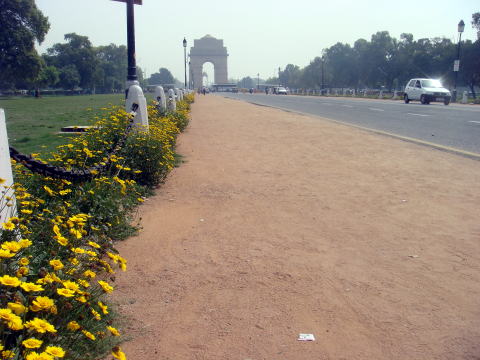 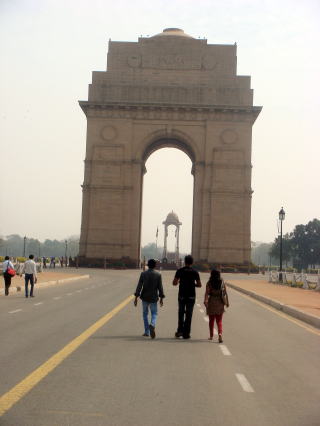
A straight road to the India Gate
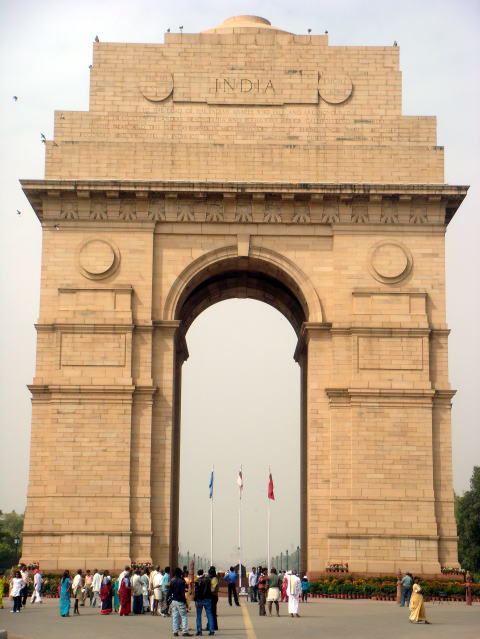 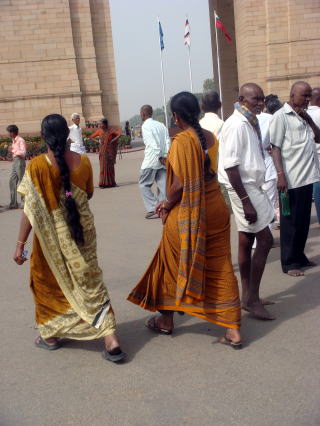
A numerous Indian tourist visited here.
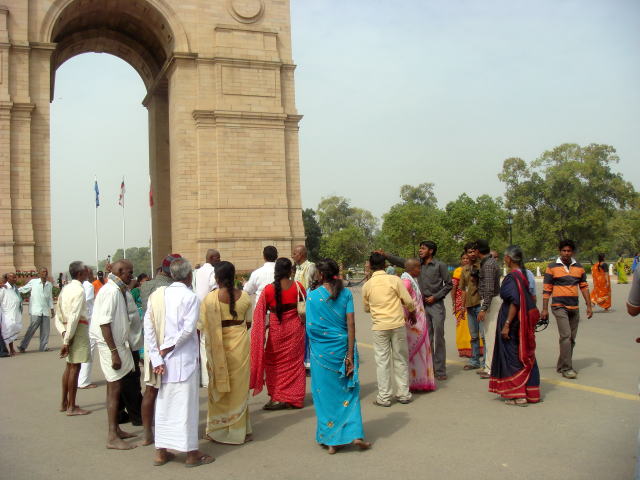 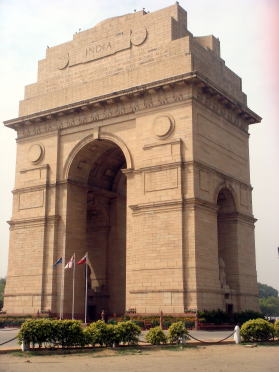
A colorful Indian clothe and the gate.
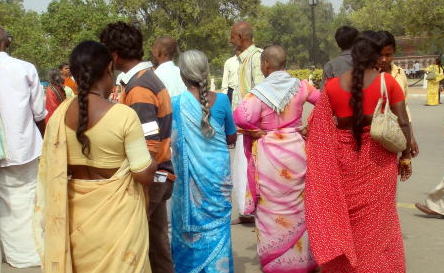 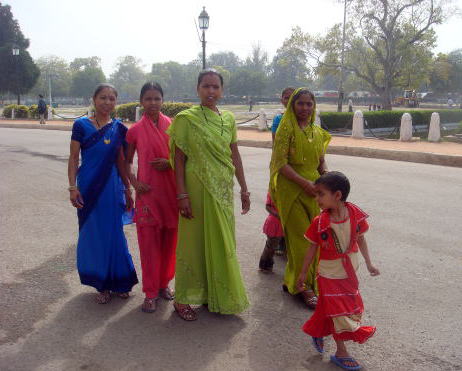
Indian ladies appeared to be interesting in a visitor from Japan.
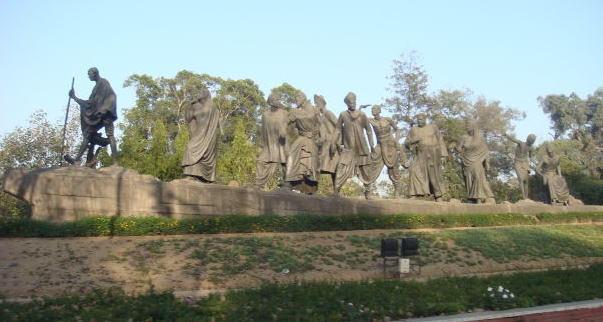 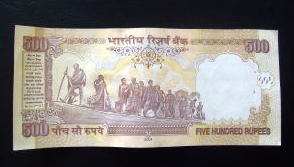
(L) Statue of Mahatma Gandhi, Dehli, India (R) A reverse side of 500 Rupee
bank note
Laxminarayan Temple
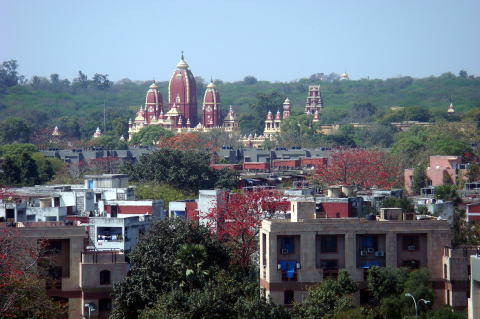 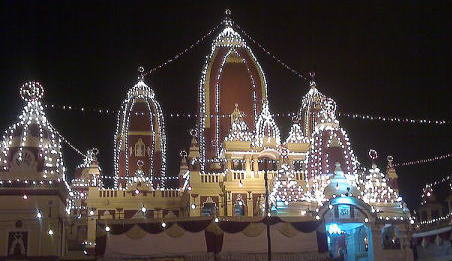
(L) Laxminarayan Temple seen from the Metropolitan Hotel New Dehli
(R) Temple decorated on Occasion of Janmashtami, on the birth anniversary
of Lord Krishna
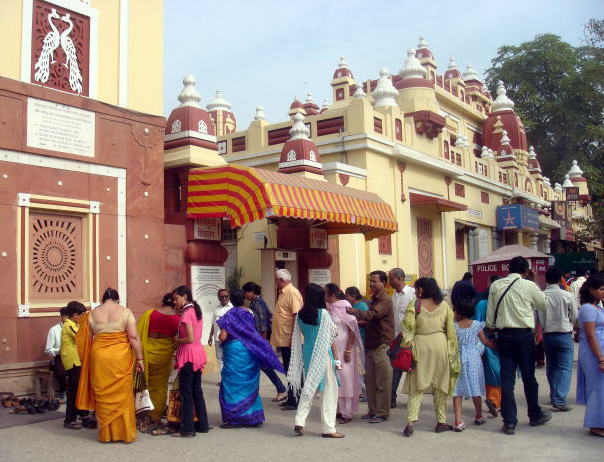 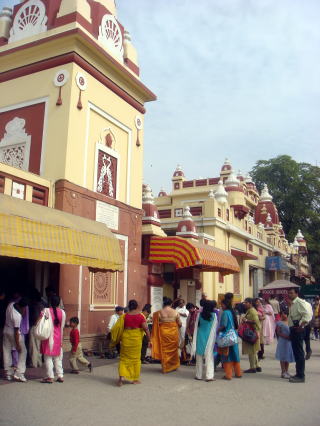
Entrance to the Laxminarayan Temple
All cameras should be placed to the keyed rocker before entering to the
temple.
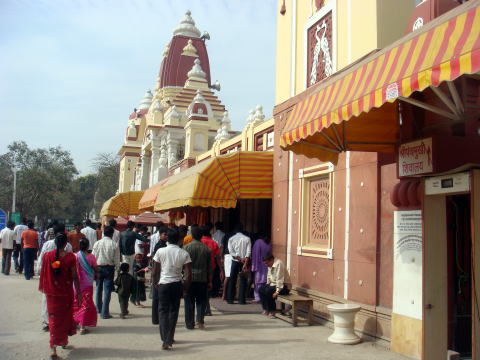 
Entrance to the Laxminarayan Temple ( No photography is allowed inside.
)
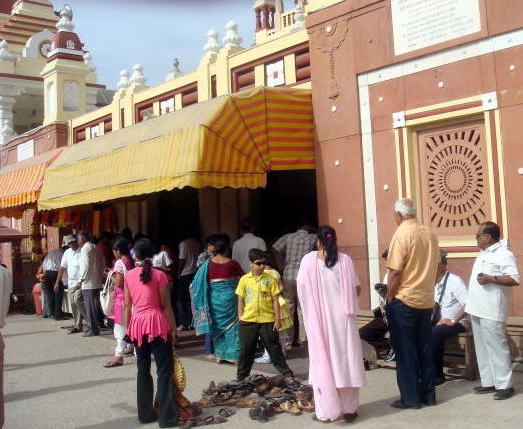 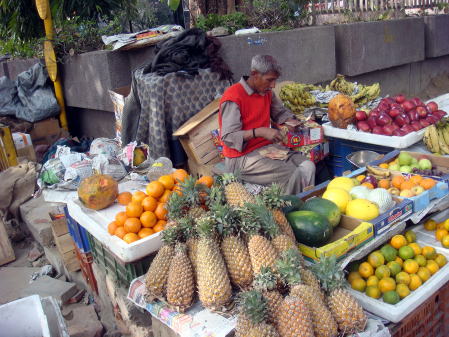
(R) An Indian boy collecting a small money to keep tourists' footwear.
(R) A fruit shop in the street nearby the Laxminarayan Temple
The Laxminarayan Temple, also called Birla Mandir, in Dehli, is a temple
built in honor of the Hindu goddess
of wealth, Laxmi, and her consort, Lord Vishnu, the Preserver in Trimurti.
It is a temple with many shrines,
fountains, and a large garden.
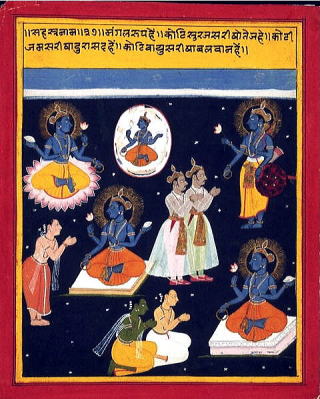 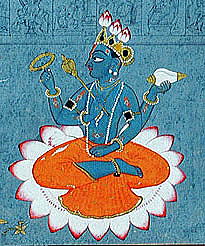 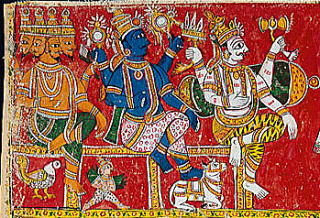
(L) Vishnu sahasranama manuscript, ca1690 (M) A painting of Vishnu seated
on lotus
(R) Shiva, Vishnu, and Brahma, (from right) From the Story of the Sages
Markandeya and Bhavana, ca 1850-1900
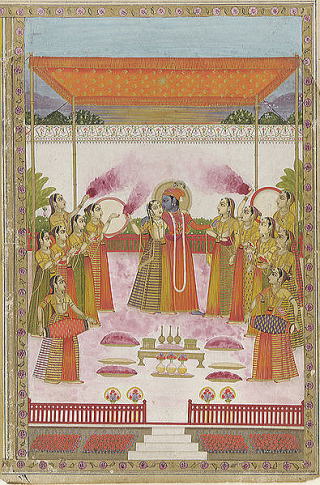 
(L) Radha and Krishna, and Sakhis are playing Holi, 19th century. Opaque
watercolor and gold on paper
(R) Brahma, Vishnu and Shiva seated on lotuses with their consorts: Saraswati,
Lakshmi, and Parvati respectively, ca 1770.
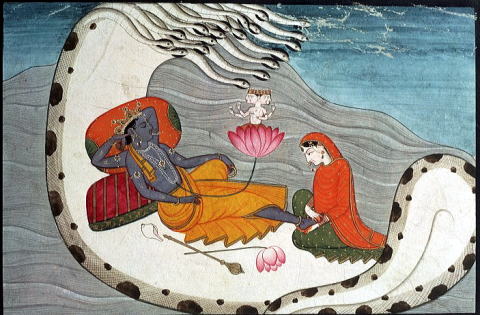 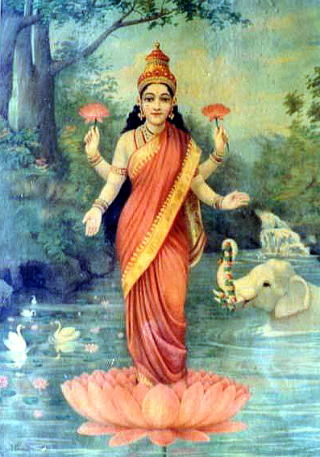
(L) Vishnu and Lakshmi on Shesha Naga, ca. 1870 (R) Devi (Tridevi), Shakti
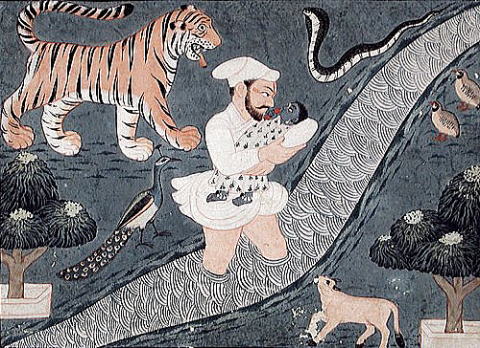 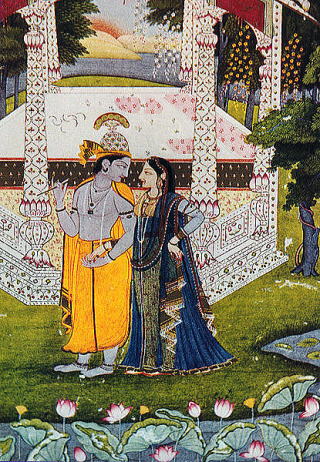
(L) Krishna is carried by his father Vasudeva across river Yamuna to Vrindavana,
mid 18th century painting.
(R) Krishna with Radha, 18th century
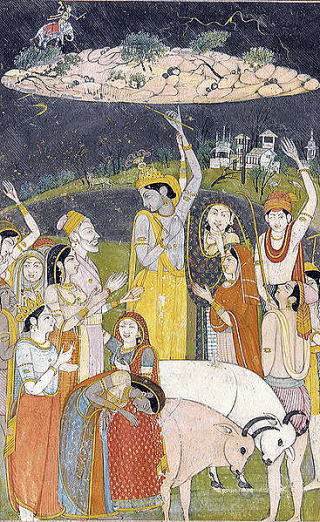 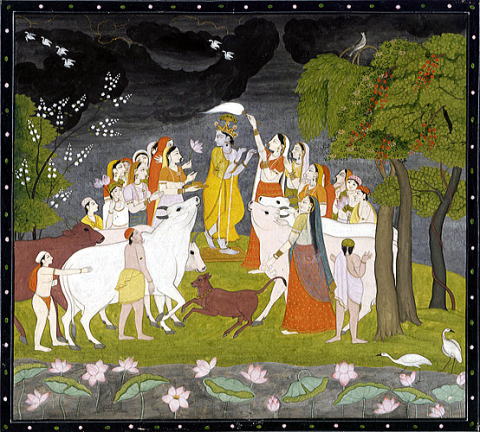
(L) Krishna holding Govardhan hill
(R) Krishna with Gopis, painting from Smithsonian Institution
Source: Wikipedia
The Red Fort, or Lal Qila
The Red Fort, usually transcribed into English as Lal Qil'ah or Lal Qila
is a 17th century fort complex constructed
by the Mughal emperor Shahjahan in the walled city of Old Delhi. It served
as the capital of the Mughal until 1857,
when Mughal emperor Bahadur Shah Zafar was exiled by the British Indian
government. The British used it as
a military camp until India was made independent in 1947. It is now a popular
tourist site, as well as a powerful
symbol of India's sovereignty.
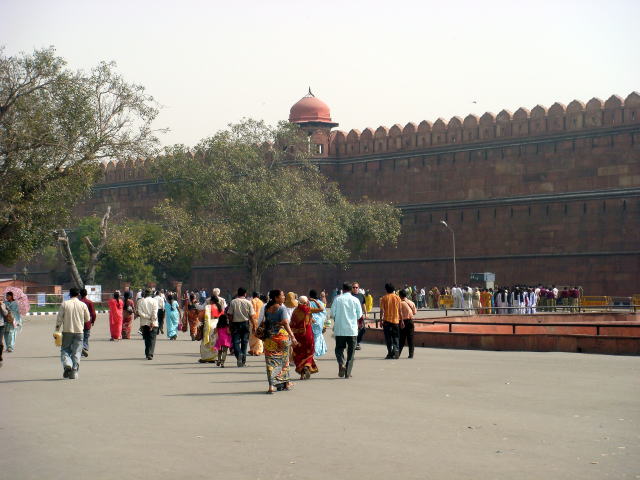 
(L) Approching to the Lal Qila (R) The Indian flag flying from Dehli Gate
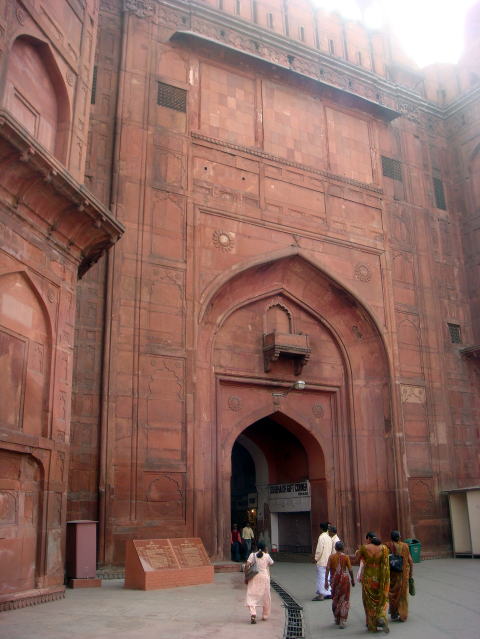 
The Lahore Gate of the Red Fort
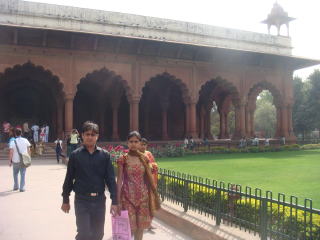 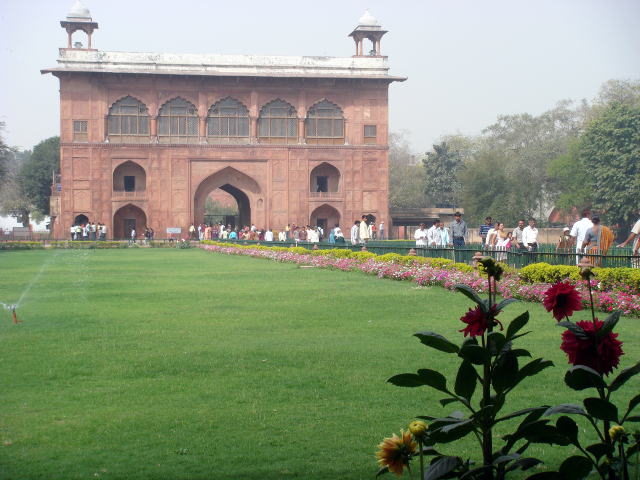
(L) Diwan-Khas (R) Naqqar Khana at the Red Fort, Dehli
 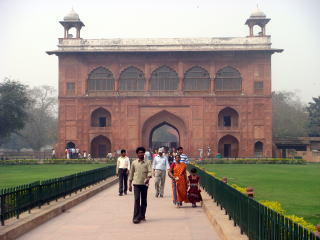
(L) Pavilions in the courtyard (R) Naqqar Khana at the Red Fort, Dehli
  
Lovely squirrel in the courtyard
 
Boy and girl students in the court yard of the Red Fort, Dehli
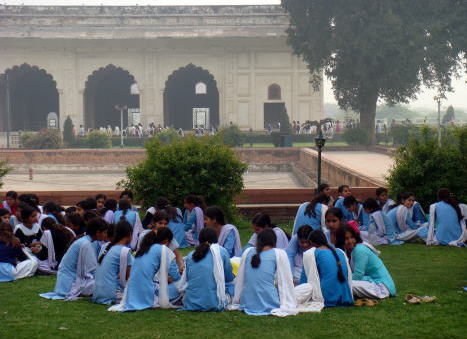 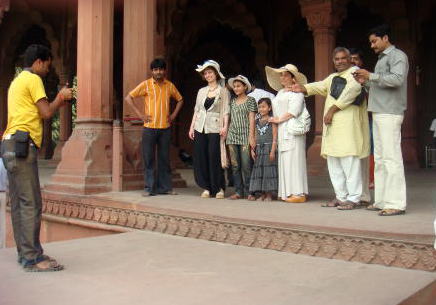
(L) Girl students in the court yard of the Red Fort, Dehli (R) A souvenir
photography at the Diwan-Aam
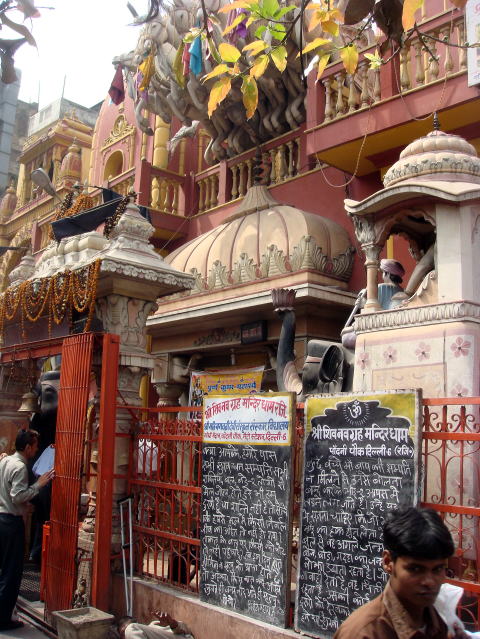 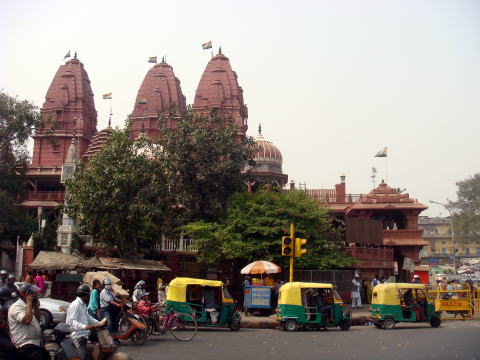
A Hindu temple located nearby the red fort.
Akshardham
 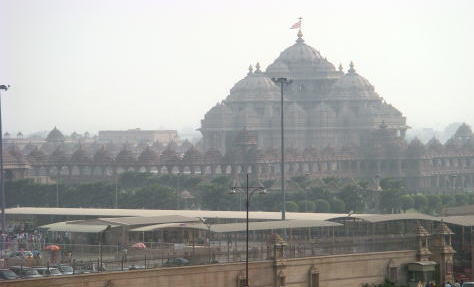
(L) Dehli Metro, Akshardham station (R) A view of Akshardham from the plateform
of Metro station
Akshardham is a Hindu temple complex in Delhi, India. It is also referred
as the Delhi-Akshardham. The complex
displays the traditional Indian and Hindu culture, in spirit, and architecture.
The building was inspired and
moderated by Pramukh Swami Maharaj, the spiritual head, whose 3,000 volunteers
helped 7,000 artisans to
construct the Akshardham. The temple, which attracts about 70 percent of
all tourists who visit Delhi, was officially
opened in November 2005.
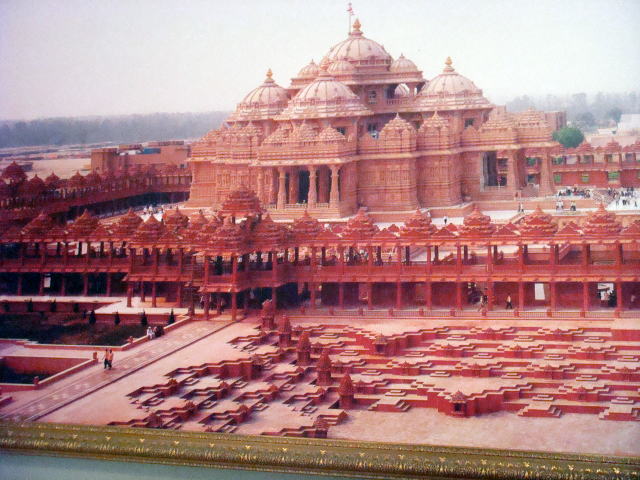 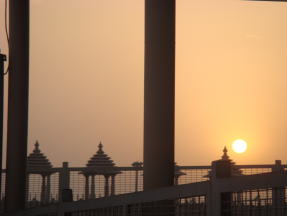
(L) A large station panel of the Akshardham (R) A sunset of the Akshardham
1911年に英領インドの首都がデリーに建設され、1931年にインド門が完成した。高さは42メートルあり、第一次世界
大戦で戦死したインド兵士の慰霊碑である。多くのインド人がここを訪れていた。
ニューデリー、 ラクシュミー・ナーラーヤンは1932年に完成したヒンドゥー寺院である。「ナーラーヤン」はヒンドゥー
の神、ヴィシュヌの別名であり、「ラクシュミー」はその妃の名に由来する。入口にはセキュリテイチェックがあり、
カメラ、ビデオの撮影機材は鍵のかかるロッカーに収容せねばならない。従って一切撮影は出来ない。履き物をぬいで
裸足で寺院内部に入る。大理石の床は素足だととても気持ちよい。多くのインド人が神々の部屋をめぐり祈りを捧げて
いた。
ムガール帝国第5代皇帝シャー・ジャハーンはアーグラからデリーに遷都し、新たに自らの名を冠した都城を造営した。
その中心がラール・キラー(レッド・フォート)である。チャンドニー・チョウク・メトロ駅から人と車がひしめき合う
雑多な店の建ち並ぶ大通りを行くと急に広場が開けラホ−ル門に至る。セキュリテイチェックを受けた後ラホール門を
くぐり抜けると土産物店の建ち並ぶアーケードがある。その奥に宮殿が建ち並ぶ。一時は栄華を極めたが1857年に起きた
イギリス、反乱軍との戦闘で多くの宮殿は破壊された。
アクシャルダム寺院は、インドのデリーにある、ヒンドゥー教の寺院で、祭神はヴィシュヌ派の聖人スワミナラヤンである。
1968年当時、BAPSスワミナラヤン教の教祖ヨギ・マハラジ(Yogiji Maharaj)が、ヤムナー川岸に巨大寺院建築の建設を
構想。彼の死後、後継者のプラムク(Pramukh Swami Maharaj)が構想の遺志を継ぎ、デリー開発局への申請を経て、
正式に建設が決定。2000年4月に開発局から24万平方メートルの土地を与えられ、2000年11月に工事が着工,2005年
11月、正式に開院した。2007年に、世界最大のヒンドゥー教寺院としてギネスブックに認定された。 植物や動物、
神々の彫刻が施された石造の寺院は、高さ43メートル、幅96メートル、長さ110メートルある。ラージャスターン州産の
砂岩やイタリア・カッラーラ産の大理石を使用するなど、建築には鉄やコンクリートが使用されていない。象の彫刻や
スワミナラヤンの巨大な絵が掲げられている。
(Reference: Wikipedia)
この寺院に入る前に携帯電話、カメラ、ビデオおよび貴重品を除くすべての荷物を預けねばならない。セキュリテイ用の
建物があり、男女別に厳しいチェックを受ける。列をつくり、相当長い時間を待たねばならないのでそれに耐えねばなら
ない。入場料は無料である。寺院の雄大さ、きめ細かな彫刻を通じてインドの神話物語を学び取ることが出来る。夕日に
映える寺院はまた格別である。ただ、カメラもなく、撮影できないので自分の脳細胞に記憶させるしかない。新しい
ヒンドゥーの寺院建築として世界に誇れるインドの歴史的資産であろう。
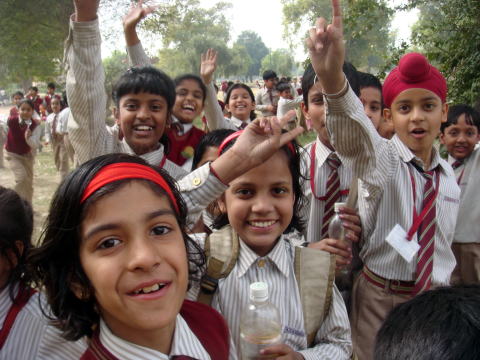 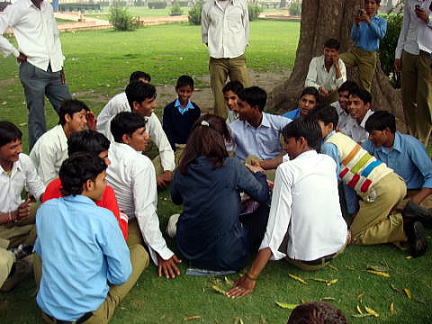
(L) Indian students greeted us with flirting, in a garden besides Indian
Gate.
(R) My partner was surrounded by boy students.
レッド・フォートの広い敷地には多くのインド人が訪れていた。理由は定かではないが、筆者らは高校生の大歓迎に遭った。
日本にあこがれているようで、沢山の人々から握手を求められた。これらの人たちが社会を動かすときはインドも大きく
変わっているに違いない。少なくとも、そう望みたい。
India
 Arrival to India Arrival to India  India's hotels India's hotels  Dehli temples Dehli temples  Dehli Metro Dehli Metro  Indian railways Indian railways  New Dehli New Dehli
 Agra Agra  Taj Mahal Taj Mahal  Cheating in India Cheating in India Security in India Security in India  Smoking ban in India Smoking ban in India  India 2010 India 2010
 デリーの記念碑および寺院建築 デリーの記念碑および寺院建築
 2010年3月執筆 医学博士 宮本順伯 2010年3月執筆 医学博士 宮本順伯
★This Web site is link-free.
The article was written and photographs were taken in March 2010,
by Junhaku miyamoto, M.D., PhD..
Copyright(C) 2010 Junhaku Miyamoto, All rights reserved.
|